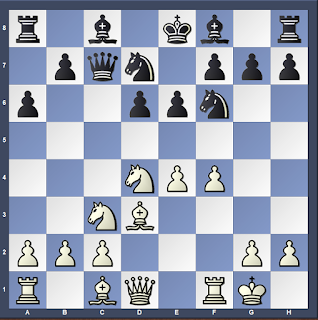What does prophylaxis mean in chess? I think a good chunk of club players might not be fully aware about how important the concept is over the board, and even some players who are aware can forget about it completely during their own games. In reality, prophylaxis is not an advanced idea, but it does requires a certain mindset to be used effectively.
In medicine, "prophylaxis" specifically means some kind of treatment that is designed to prevent a disease from happening. For example, you get a flu shot as prophylaxis against the flu virus. Of course, it's not a sure bet that you'll actually get the flu if you neglect the shot, but if you do get the vaccine you're significantly less likely to get sick.
Over the chessboard, it's exactly the same idea, just a little more abstract. Prophylaxis in chess is anything that prevents your opponent from doing something that would be bad for you in the future. Now, that's a very broad definition, but I'll illustrate with a basic example that I think many of you would be familiar with:
In this position, most experienced players with white would probably play a move like h2-h3 to make luft before doing anything else. But why? After all, black isn't even threatening back rank mate right now. Why would we play h2-h3 like this if there's no threat?
This highlights the key difference between "prophylaxis" and "defense". The point of h2-h3 here isn't to defend against an immediate threat of checkmate; rather, it's designed to prophylactically stop all future back rank mates because we'll always have an escape square on h2.
Of course, I can't say for sure that you will get back ranked if you neglect such a move, but you'd definitely be at a higher risk - for example, here's how things could go horribly wrong if you don't make luft: 1.Rd1? Qb2! 2.Qxb2 Rxd1#. That would be painful, but it's completely avoidable if you had simply played h2-h3 earlier.
I'll show one more example that you might commonly see in practice.
We have a pretty standard Sicilian position, with white to move. What do you think is the most common move played by grandmasters here? You might think that it would be something to continue development - perhaps 9.Be3 or 9.Qe2, but it's actually 9.Kh1.
To someone unfamiliar with prophylaxis, this may seem like a somewhat bizarre move - after all, what does that king have to do with anything? Well, imagine that later black plays something like Qc7-b6 and then even d6-d5 and Bf8-c5. Suddenly you can see that the Nd4 would be in a dangerous pin against the king on g1, and we'd probably have to do some uncomfortable things to defend and escape. By playing 9.Kh1, white prophylactically avoids all that by stepping away from the pin before it even exists.
With those examples in mind, we can generalize our definition of prophylaxis as just any move that stops a good idea our opponent might have. If our opponent has the idea of playing for back rank mate, we stop it before it even becomes a threat. If our opponent has an idea of creating a pin against one of our pieces, we make some move to evade that before it even happens.
We can keep applying this to literally anything else - say you notice your opponent wants to maneuver a knight to a strong outpost; you could be prophylactic and stop that. Or suppose you have two undefended pieces and you think your opponent might try to fork them later; you could be prophylactic by moving one of them back to safety.
This leads us to the formula for thinking prophylactically - you have to ask yourself what your opponent wants to do. Put yourself in his/her shoes and try to figure out what their ideas are, and then stop them before they actually get a chance to happen over the board. I guarantee you this is something that every single grandmaster in the world does both regularly and effectively.
Have you ever played in a simul against a strong player and been sitting at your board, trying to guess what their next move will be? Perhaps you spend several minutes looking at all the obvious moves, and you come up with your own prepared responses to them. Then the master/IM/GM comes around to you, looks at the position for a few seconds, and to your surprise plays something completely innocuous with no apparent purpose. It's a good bet that move had prophylactic intentions. There was some tactical idea they were worried about in the future, so they simply move away from it long before it could even become a real threat.
I know this because I do this when giving simuls myself! I'm only human; I simply don't have the time or energy to calculate lots of variations on every single board, so I make things easier for myself by preventing the tactics from being able to happen in the first place. I use prophylaxis now so that I won't have to defend later. Only when my position is secure enough do I go about executing my own plans to actually try and win.
This brings us to the last point, which is that the key to gradually improving your position is prophylaxis. Next time I'll show some practical examples from real games.


Thanks Lev, can't wait!
ReplyDelete